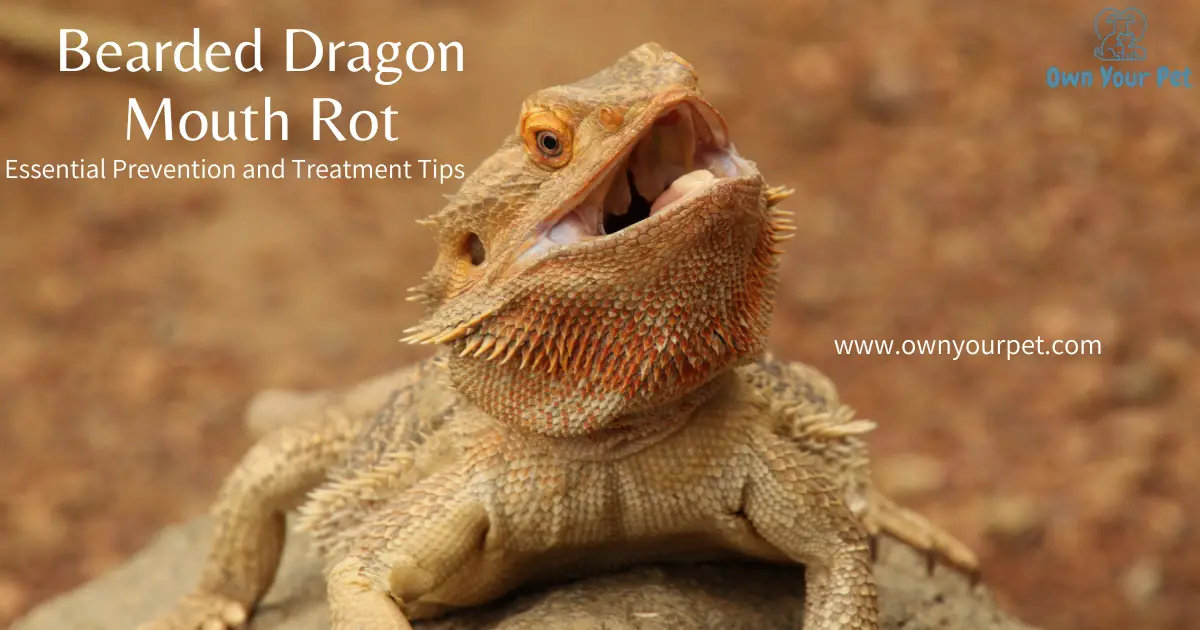Are you concerned about your bearded dragon’s oral health? In this informative article, we will explore the topic of Bearded Dragon Mouth Rot, a condition caused by bacterial infections. Learn about the signs of mouth rot, such as ulcers and inflammation, and the potential causes, including improper temperature and environmental conditions.
Discover how to identify and address this condition to ensure your dragon’s well-being. Let’s dive into the world of bearded dragon oral health and understand the importance of proper care.
Bearded Dragon Mouth Rot: Overview
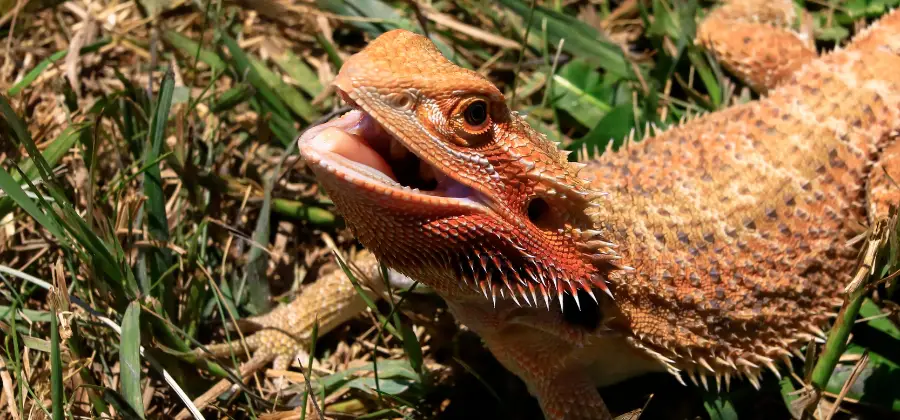
Bearded dragons are popular reptiles to keep as pets due to their friendly nature, unique appearance, and relatively low maintenance requirements. However, like any other pet, they can develop health issues, one of which is mouth rot, a painful condition that affects the oral cavity of these charming creatures.
Mouth rot, also known as stomatitis, is a necro-inflammatory condition marked by inflammation, redness, and lesions in the mouth.
Mouth rot is often seen in captive bearded dragons but can also affect other reptiles. It is a serious condition that requires timely attention and treatment to prevent complications such as severe infection, loss of teeth or jawbone, and difficulty eating.
The causes of mouth rot in bearded dragons can range from poor husbandry to bacterial or fungal infections, making it crucial for owners to monitor their pet’s health and living conditions closely.
Understanding the causes, symptoms, and treatment options for mouth rot in bearded dragons is essential for owners to ensure their reptilian companions receive the proper care they need.
Early detection and intervention can help prevent severe health issues, ensuring the well-being of these beloved pets. With proper care and attention, bearded dragons can lead healthy, happy lives.
Signs and Symptoms of Bearded Dragon Mouth Rot
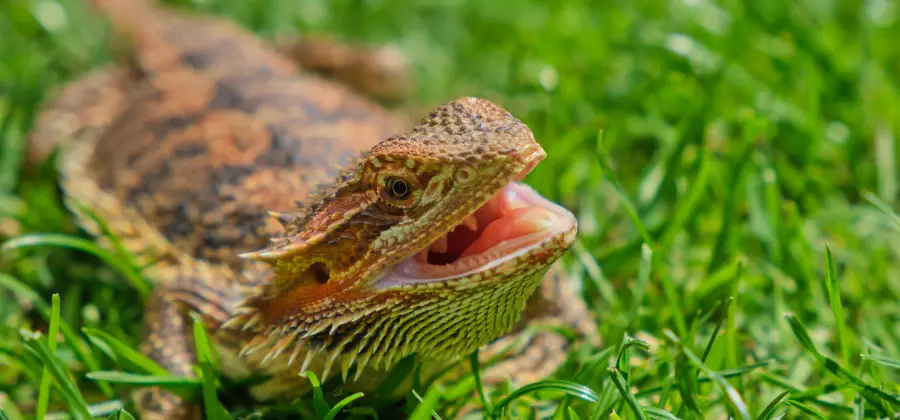
Swelling and Discoloration
One of the earliest symptoms of mouth rot in bearded dragons is the swelling and discoloration of the reptile’s oral tissues.
The gum area may appear inflamed, and there could be noticeable redness or even a darkening of the tissue color. This may cause visible discomfort to the bearded dragon, and if left untreated, the condition can progress to more severe symptoms.
Loss of Appetite and Weight
As bearded dragons experience pain and discomfort from mouth rot, they may lose their appetite and consume fewer nutrients than usual. This can lead to weight loss and lethargy as the bearded dragon becomes less active due to the energy deficit.
Keeping a close eye on your bearded dragon’s eating habits and monitoring any changes can help identify this symptom early on.
Causes of Loss in Appetite
1. Metabolic Bone Disease (MBD)
– Insufficient Calcium and Vitamin D3 Intake
– Importance of Balanced Diet and Supplements
2. Dental Issues
– Mouth Rot and Oral Infections
– Dental Cleaning and Oral Care
3. Contagious Viruses
– Symptoms and Diagnosis
– Veterinary Assistance and Diagnostic Tests
Environmental Factors
1. Inadequate Living Conditions
– Clean Enclosure and Ambient Temperature
– Proper Temperature Gradient
2. Inadequate Diet and Hydration
– Balanced and Nutritious Diet
– Multivitamin Supplements and Water Intake
Seeking Veterinary Assistance
1. Importance of Professional Treatment
– Diagnosis and Treatment Options
– Regular Monitoring and Yearly Checkups
– Clean Environment and Proper Hygiene
– Preventative Measures for a Healthy Diet and Appetite
2. Identifying Underlying Issues
– Oral Issues and Health Conditions
– Impact of Underlying Conditions on Appetite
Bleeding Gums and Loose Teeth
As the mouth rot progresses, bearded dragons may experience bleeding gums and loose or even missing teeth. The oral inflammation and infection can cause considerable pain, making it difficult for the reptile to eat or drink.
If you notice any blood or signs of tooth loss in your bearded dragon, it is crucial to consult with a veterinarian to get the appropriate treatment.
Discharge and Patches of Rot
Advanced cases of bearded dragon mouth rot often present with the formation of discharge and patches of rot. This can manifest as a white or yellowish substance oozing from the affected areas of the mouth. Additionally, the rot can create visible lesions on the oral tissues that may continue to worsen without proper treatment.
It is essential to monitor your bearded dragon for any changes in its oral health and seek veterinary care if any of these symptoms present themselves. Early recognition and appropriate intervention can help prevent more severe complications and ensure the well-being of your beloved pet.
Causes of Mouth Rot in Bearded Dragons
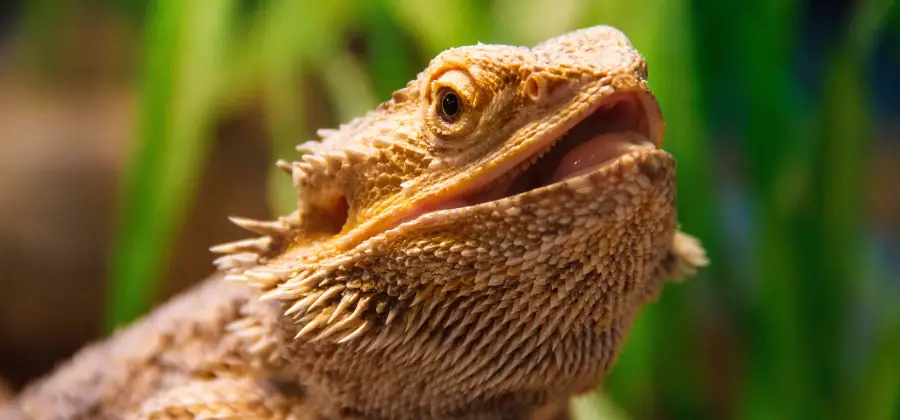
Bacterial and Fungal Infections
Mouth rot, also known as stomatitis, is a common condition in bearded dragons that bacterial or fungal infections can cause. These microorganisms often enter the dragon’s mouth and start infecting the gums, teeth, and oral cavity.
Factors that can predispose a bearded dragon to bacterial or fungal infections include:
- Inadequate temperature and humidity levels within their enclosure
- Poor overall living conditions
- A weakened immune system due to stress or poor diet
Maintaining a clean and well-regulated environment can help prevent these infections from taking hold and causing mouth rot in your bearded dragon.
Stressful Environment and Poor Nutrition
Stress and poor nutrition can weaken a bearded dragon’s immune system, making them more susceptible to mouth rot. Some factors that cause stress in bearded dragons are:
- Inappropriate temperature and humidity levels
- Inadequate enclosure size or overcrowding
- Incorrect UVB lighting
- Frequent handling or harassment from other pets
On the other hand, poor nutrition can also contribute to the development of mouth rot. A well-balanced diet, rich in vitamins and minerals, is essential for maintaining the health of your dragon.
Feeding them a variety of insects, vegetables, and fruits, as well as providing calcium and vitamin supplements, will help ensure they receive proper nourishment and can fight off infections.
Physical Injury and Broken Teeth
Physical injuries, such as cuts or abrasions in the mouth, or broken teeth, can provide an entry point for bacteria or fungi, leading to mouth rot. It’s essential to monitor your bearded dragon’s teeth and oral health regularly.
If you notice any signs of injury or broken teeth, consult with a reptile veterinarian to address the issue and prevent the development of mouth rot.
STOP Bearded Dragon MOUTH ROT Before It Happens!! Clean Lizard Mouth! Watch this
Preventing and Treating Mouth Rot
Proper Environment and Care
Maintaining a clean environment is crucial for preventing mouth rot in bearded dragons. Ensure the enclosure has the proper temperature and humidity levels, as well as adequate lighting.
Replace the substrate regularly to keep the enclosure free from bacteria, parasites, and fungal growth. Disinfect the tank with a reptile-safe disinfectant like Nolvasan to maintain cleanliness and hygiene.
Diet and Nutrition
Providing a well-balanced diet is essential for maintaining a strong immune system in bearded dragons. A diet rich in nutrients can help prevent mouth rot and other health problems. Offer a variety of live prey, vegetables, and supplements to ensure all nutritional needs are met.
Monitoring Signs of Stress
Bearded dragons are sensitive to stress, which can weaken their immune system and make them more susceptible to mouth rot and other infections. Monitor your beardie for signs of stress, such as loss of appetite, lethargy, or aggression.
Make sure to provide hiding spots within the enclosure, and minimize handling to reduce stress.
Consulting a Veterinarian
If you suspect your bearded dragon has mouth rot, seek a veterinarian experienced with reptiles as soon as possible. Symptoms include bleeding gums, yellow pus, and discharge from the oral cavity.
Early diagnosis and intervention can help prevent complications, such as organ failure or jaw bone erosion.
Treatment Options
Upon diagnosis, your vet may prescribe antibiotics or antifungal medications to target the underlying cause of the mouth rot, whether it’s bacterial or fungal. It’s essential to follow the treatment plan and dosage instructions provided by your vet.
In addition to prescribed medications, you can also use an antiseptic solution like Betadine to clean the infected area. Dilute it with water to create a mild solution, and gently dab it onto the affected area using a Q-tip. This can help minimize the risk of infection spreading further.
Maintaining proper oral hygiene, monitoring interaction with other reptiles, and addressing any physical injuries can also aid in the prevention and treatment of mouth rot. By following these preventative measures and seeking appropriate treatment, you can help ensure your bearded dragon remains healthy and happy.
Conclusion: Bearded Dragon Mouth Rot
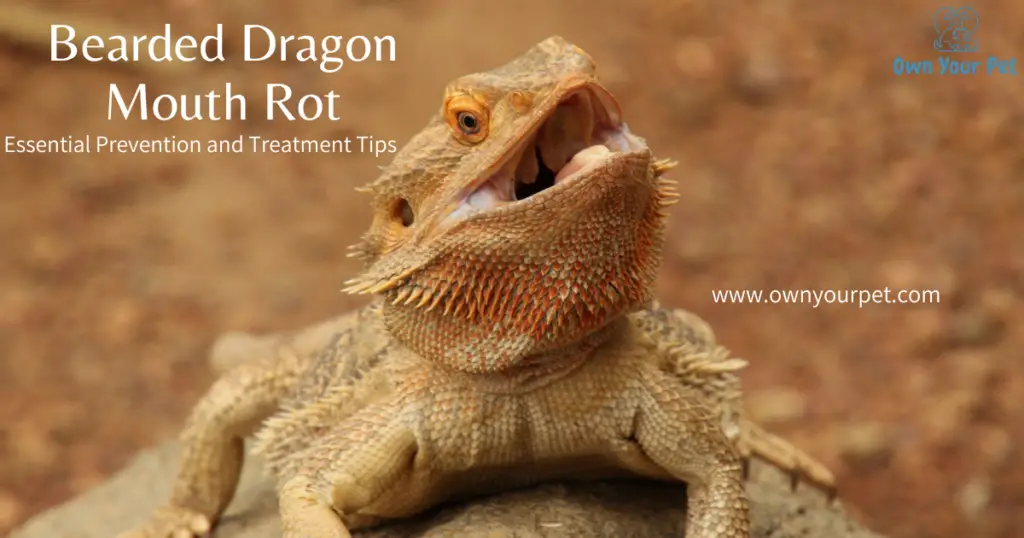
In conclusion, maintaining proper oral health and hygiene is essential for the well-being of bearded dragons. Clean water is crucial for hydration and preventing bacterial infections. Loss of appetite can be an indication of oral issues, including mouth inflammation, untreated mouth injuries, or the risk of mouth rot.
Pet owners should provide supportive care and seek veterinary assistance when needed. Injectable antibiotics may be administered to combat bacterial infections, and the dragon’s immune system should be supported through a balanced diet and regular physical exams.
Respiratory infections and fungal infections can also affect oral health, highlighting the importance of a clean environment and clean enclosure. Regular monitoring and prompt treatment can prevent the progression of oral diseases and ensure a high quality of life for the reptile.
Pet owners should be aware of common symptoms such as yellow patches, gray patches, or unusual behavior and seek professional treatment promptly. Proper care, including regular dental check-ups, the use of cotton buds for cleaning, and a suitable diet during recovery, can prevent and manage oral infections.
By addressing any underlying health conditions, providing a clean and warm environment, and following preventative measures, bearded dragon owners can promote the well-being of their scaly friends and minimize the risk of oral diseases.
FAQs
Q: What causes Bearded Dragon Mouth Rot?
A: Bearded Dragon Mouth Rot is primarily caused by bacterial infections, such as infectious stomatitis or ulcerative stomatitis.
Q: What are the signs of Mouth Rot in bearded dragons?
A: Common signs of Mouth Rot include ulcers, inflammation, and discoloration of the mouth tissue. A lack of appetite and overall lethargy may also be observed.
Q: Can improper temperature contribute to Mouth Rot?
A: Yes, improper temperature in the bearded dragon’s habitat can weaken their immune system, making them more susceptible to bacterial infections.
Q: How can I clean my dragon’s mouth if it has Mouth Rot?
A: Gently swab the affected area with a cotton swab dipped in a recommended solution or under the guidance of a reptile veterinarian.
Q: Are environmental conditions a factor in developing Mouth Rot?
A: Yes, poor environmental conditions, such as inadequate hygiene and unclean living spaces, can increase the risk of developing Mouth Rot in bearded dragons.
Please consult a reptile veterinarian for a proper diagnosis and treatment plan for your dragon with Mouth Rot.
